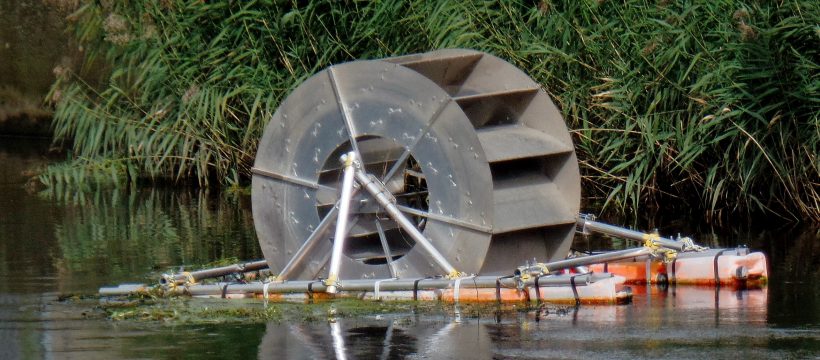Communities Countering Climate Change
Active Energy, led by Loraine Leeson, has been collaborating with the Geezers for twelve years. On 20th Sept 2019 they celebrated the installation of the latest Active Energy project, a waterwheel to oxygenate the water in the Waterworks River beside the London Aquatics Centre.
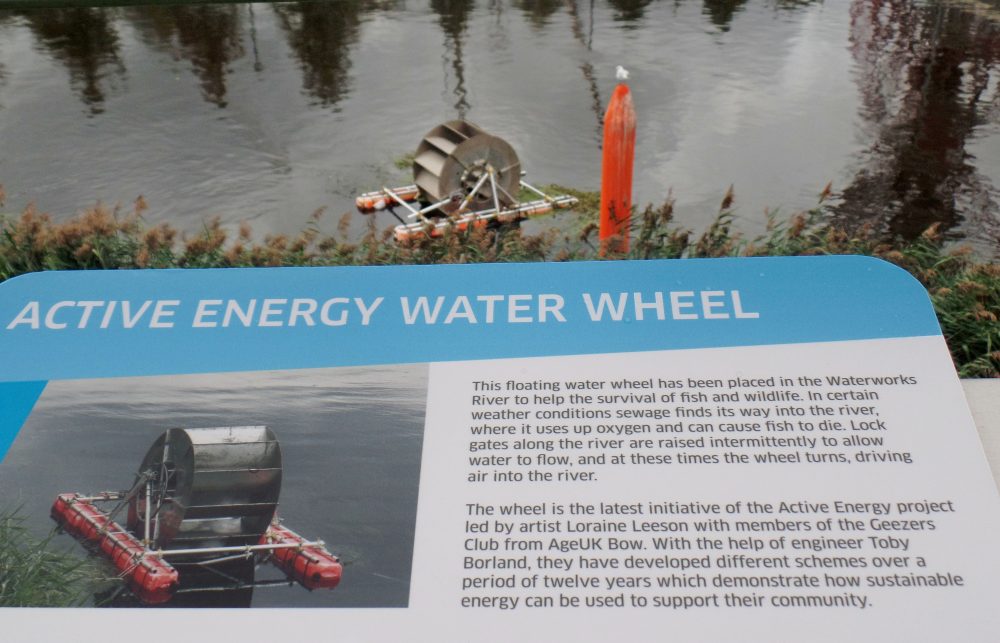
Active Energy is an award winning arts and environment project in East London led by artist Loraine Leeson with seniors’ group The Geezers. Their collaboration commenced as a challenge to the lack of input by older people to technological development. Twelve years later they have contributed to three university research projects, held two exhibitions, conducted numerous talks and presentations, and collaborated on a project and installation with a seniors’ group in Pittsburgh.
Their first exhibition and conference presentation looked at how tidal turbines could use the Thames Barrier as a barrage. Then, once engineer Toby Borland had joined the team, they created a small-scale wind turbine with local school children for installation on the roof of the AgeUK centre Appian Court. This spelled out ‘Geezer Power’ in lights as it spun. They later worked with the project to test a low-cost turbine in the Thames, followed by a floating water wheel for Three Mills tidal basin. This utilised tidal flow to drive an aerator to help keep fish alive when pollution levels rise, and has been followed by a second wheel for the Waterworks River in the Queen Elizabeth Olympic Park.
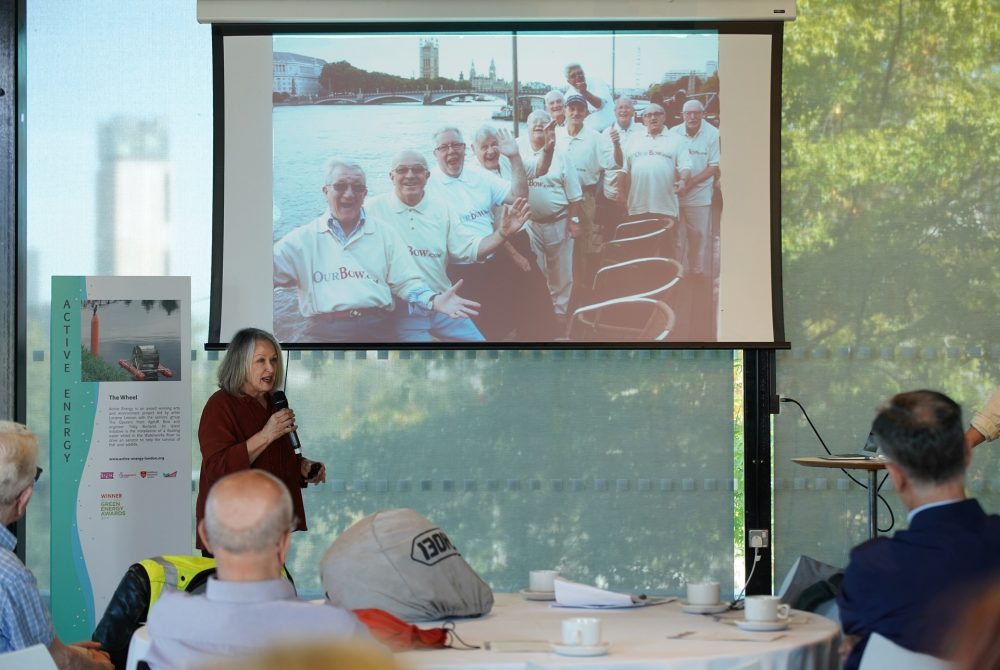
On 20th September 2019, as millions of across the globe commenced a week of action for climate justice, an event was held at The Last Drop café in the Queen Elizabeth Olympic Park, close to where the water wheel is located. It was opened by Paul Brickell, Executive Director for Regeneration and Community Partnerships at the London Legacy Development Corporation. Following this artist Loraine Leeson outlined how the project had developed after the last twelve years and engineer Toby Borland described the mechanics of the various turbines and water wheels created over this time. Ray Gipson explained how the Geezers Club had become involved, and the importance of involving older people in the development of new technologies, since none of this would have taken place without The Geezers’ input.
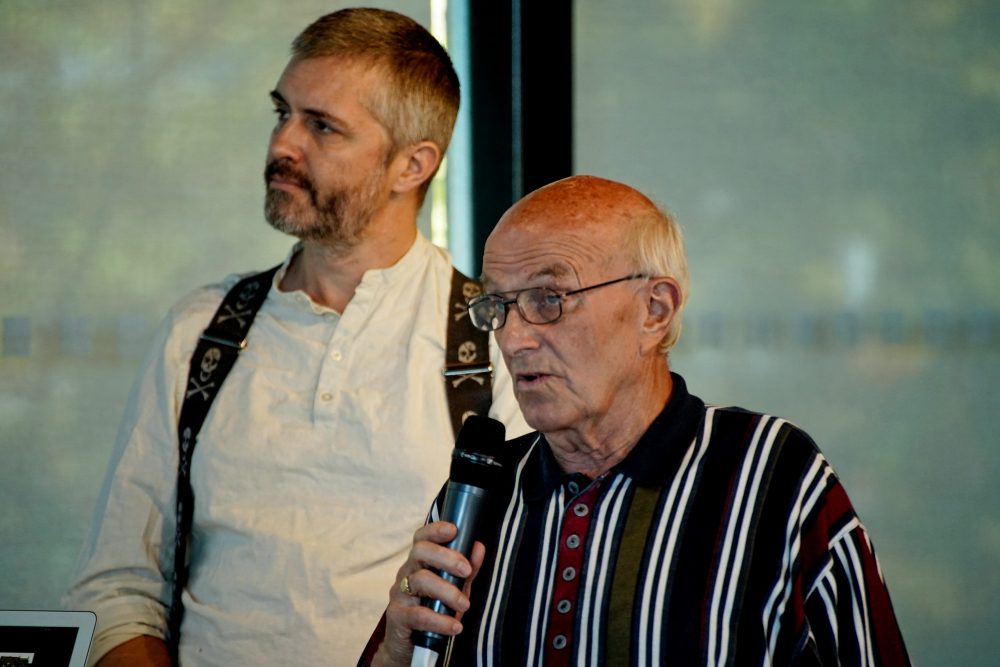
Pupils from Bow School, where The Geezers have recently assisted with the making of model turbines, showed their creations to the audience and spoke themselves about their concerns regarding climate change.
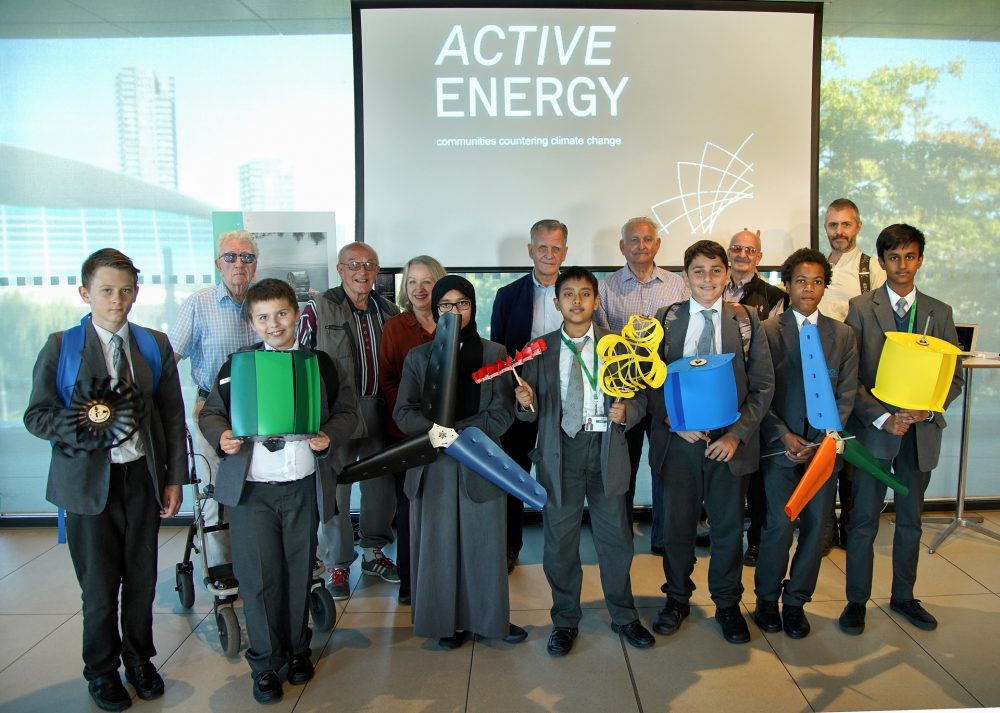
Around ten of the Geezers attended the event. Ray Gipson later said, “We’ve always enjoyed working with Loraine on our projects. Twelve years ago Loraine came to visit The Geezers and asked us, ‘What new technology do you feel would most benefit yourselves or your community?‘” Ray said that, after some thought, the Geezers collective answer was that since they were surrounded by canals and rivers in the East End, it would come from the use of wind and/or water power. The first mention of local water mills was in the Doomsday book.
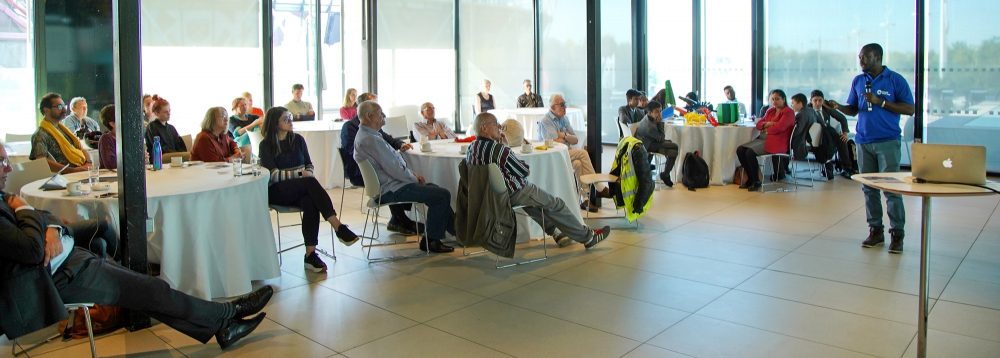
Philip Kyeremanteng of Canals and Rivers Trust then went on to demonstrate urgent environmental issues for our rivers, while James Hardy, Senior Manager for Energy and Climate Change at the Greater London Authority outlined policy level planning to counter climate change in London. He was then questioned on these strategies by the pupils and Geezers. The event was closed by Bridget McKenzie from Culture Declares Emergency, who considered what can be done by each of us to support the planet at this time of climate crisis.
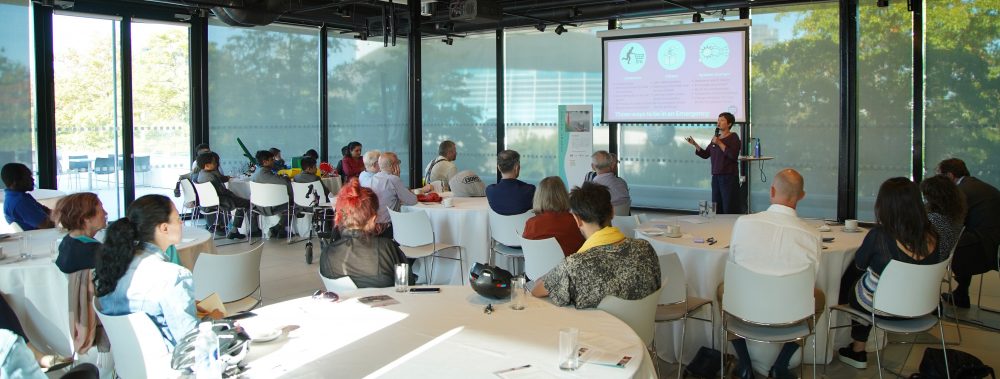
The Geezers are not quite finished with the project however. They will be helping with some more workshops at Bow School, and still want to pursue the idea of how renewable energy can be built into sheltered accommodation in LBTH to reduce energy costs for the older population, who are often unable to heat their homes.


